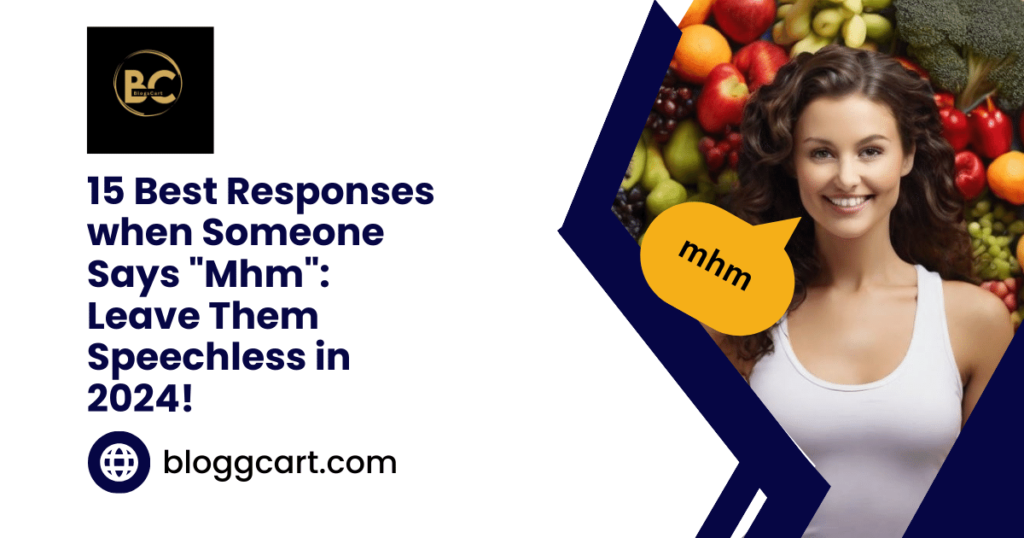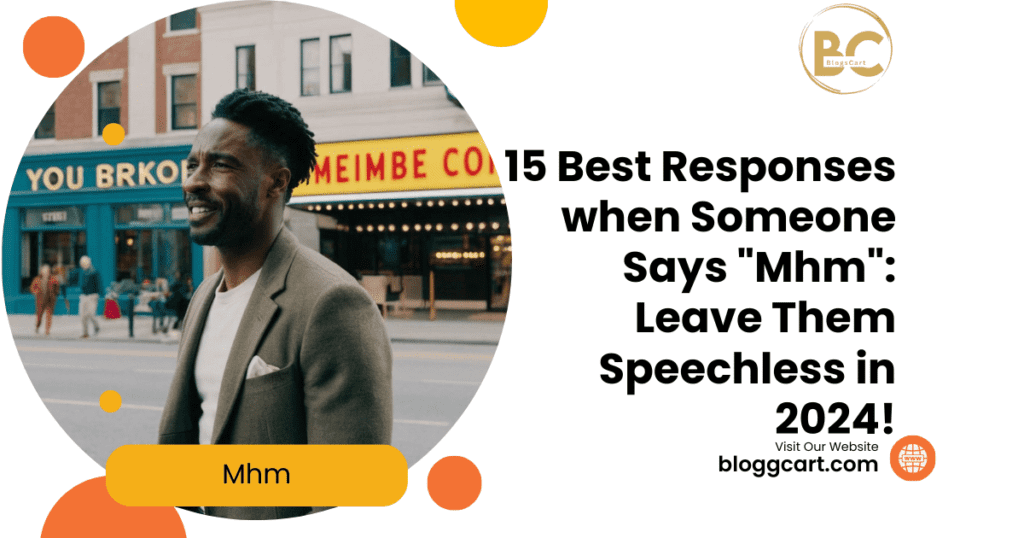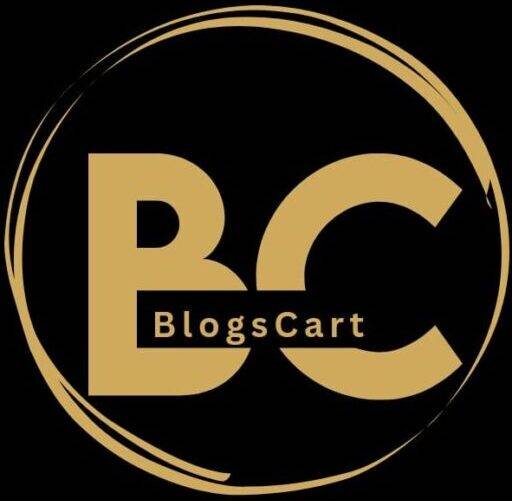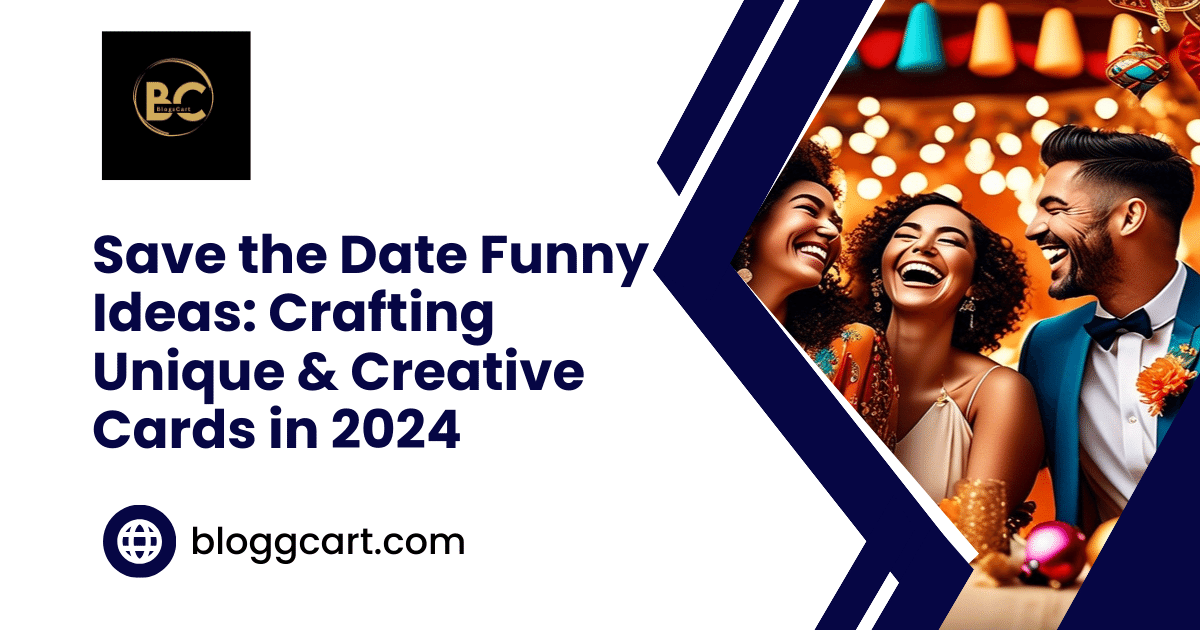Ever found yourself at a loss for words when met with a nonchalant “mhm”? Fret not! We’ve curated the ultimate arsenal of responses to keep the conversation flowing. From witty comebacks to lighthearted retorts, these quips are sure to leave your conversational counterpart nodding in approval.
In this listicle, we’ll equip you with 15 clever and entertaining responses that will elevate your interaction game. Whether you’re seeking humor, sass, or genuine engagement, our handpicked selection has got you covered. So, sit back, relax, and get ready to master the art of responding to “mhm.” Scroll down for reviews of our top picks.
Table of Contents
1. “Sounds like you’re speechless with my brilliance!”
When someone responds to you with a simple “mhm,” it can be an opportunity to playfully tease them and assert your confidence in your communication skills.
Acknowledging the impact of your statement is essential when responding to a “mhm.” By doing so, you show that you recognize the weight of what you’ve said, adding a touch of humor and humility to the conversation.
Playfully teasing the listener for being awestruck by your statement can add light-heartedness to the interaction. It’s a way of injecting some fun into the conversation while also expressing confidence in what you’ve communicated.
Asserting confidence in your communication skills helps convey that you believe in what you’ve said and are not afraid to stand behind it. This can lead to more engaging conversations as it showcases conviction and self-assuredness.
For instance, saying something like, “I guess I left you speechless with my brilliant insight!” adds a playful tone while highlighting your own perceived cleverness without being overly serious or confrontational.
2. “I’ll take that as a ‘you’re absolutely right’!”
When someone responds with “mhm,” it’s an opportunity to assume agreement in a light-hearted manner. You can playfully interpret their silence as affirmation and express confidence in your point of view.
This response is about infusing humor into the conversation while also asserting your opinion. It’s a way to acknowledge the lack of verbal confirmation but still proceed with confidence, adding a touch of playful interpretation to the interaction.
For example, imagine discussing weekend plans with a friend who responds with “mhm” when you suggest going for a hike. You could playfully respond by saying, “I’ll take that as a ‘you’re absolutely right’! Hiking it is then!” This not only adds levity to the exchange but also shows your assertiveness in making decisions based on subtle cues.
3. “Is that your way of saying you’re awestruck?”
When you playfully respond with, “Is that your way of saying you’re awestruck?” after someone says “mhm,” it’s a lighthearted way to tease the listener for being impressed. This response acknowledges the impact of your words on the listener, subtly highlighting their reaction as a form of admiration or amazement.
By teasing them in this manner, it asserts confidence in your communication skills and the ability to captivate others with your words. It also adds an element of humor to the conversation, creating a light and enjoyable interaction.
For example:
- You: “I just aced my exam.”
- Listener: “Mhm.”
- You: “Is that your way of saying you’re awestruck? I knew I could count on impressing you!”
This response can be particularly effective when used among friends or in casual settings where playful banter is welcomed. It helps maintain an engaging and lively dialogue while subtly conveying self-assurance.
4. “I’m going to need more words to process that enthusiasm.”
When someone responds with a simple “mhm,” it can be fun to playfully request a more elaborate response. You might say, “I’m going to need more words to process that enthusiasm.” This indicates surprise at the level of enthusiasm and lightly teases the listener for their brevity.
By requesting a more detailed response, you are encouraging the other person to share their thoughts or feelings in greater depth. It’s a lighthearted way of expressing interest in what they have to say while also adding humor to the conversation.
For example, imagine someone says “mhm” after you tell them about an exciting event or accomplishment. Responding with this playful comment shows that you are genuinely interested in hearing more about their reaction and experiences.
This approach can lead to engaging conversations and deeper connections with others as it encourages open communication. It also adds an element of fun and light-heartedness by teasing the listener gently for being brief in their initial response.
5. “Mhm? Did I just blow your mind?”
When you respond with, “Mhm? Did I just blow your mind?” after someone says “mhm,” you playfully question the impact of your statement. It’s a way to assert confidence in your ability to impress and engage the listener in a lighthearted manner.
By using this response, you are subtly teasing the person for their brief acknowledgment. It adds an element of humor and light-heartedness to the conversation, making it more enjoyable for both parties involved.
This playful retort can be particularly effective in casual settings or when exchanging banter with friends or family members. It helps maintain an upbeat atmosphere and can lead to further amusing exchanges.

In social situations where humor is welcomed, responding this way can help establish a fun and engaging dynamic. It showcases your wit while also prompting the other person to react or continue the conversation in an entertaining manner.
Overall, responding with “Mhm? Did I just blow your mind?” injects levity into interactions by lightly poking fun at the brevity of their response while simultaneously expressing confidence in your own ability to leave an impression.
6. “That’s a deep, thought-provoking ‘mhm’ indeed!”
When someone responds with an “mhm” that seems to carry depth, it’s essential to acknowledge the listener’s thoughtful engagement. By doing so, you validate their response and show appreciation for their attentiveness.
Playfully remarking on the thoughtful nature of their ‘mhm’ can create a lighthearted atmosphere. It allows you to express your recognition of the depth in their response while adding a touch of humor or warmth to the conversation.
Asserting confidence in your ability to provoke thought is an effective way to maintain engagement. By expressing assurance in your capacity to stimulate contemplation, you convey enthusiasm for meaningful conversations and encourage further interaction.
Acknowledging the depth behind someone’s “mhm” demonstrates respect for their input and encourages open communication. This approach fosters a sense of understanding and connection within the conversation, promoting positive interactions and building rapport with others.
In social settings or professional environments, recognizing profound responses can contribute significantly to relationship-building and collaboration efforts. Embracing such moments cultivates an environment where individuals feel valued and understood, ultimately enhancing overall communication dynamics.
7. “I’ll interpret that as a silent nod of agreement.”
When someone responds with “mhm,” it’s an opportunity to playfully assume their agreement. By interpreting their silence as affirmation, you can add a touch of humor to the conversation while expressing confidence in your point of view.
You can choose this response when you want to maintain a lighthearted atmosphere and not delve into serious discussions. It’s perfect for casual conversations or light-hearted debates where the focus is more on enjoying the interaction rather than reaching a definitive conclusion.
This approach helps in keeping the conversation positive and friendly, especially when dealing with topics that may have differing opinions. By assuming agreement in a playful manner, you create an environment where everyone feels heard without escalating tension or conflict.
For example, if discussing pizza toppings and someone responds with “mhm” after your preference for pineapple on pizza, you can playfully say, “I’ll take that ‘mhm’ as an endorsement for pineapple on pizza!” This adds fun to the discussion and keeps things upbeat.
In social settings or team meetings, using this response can also lighten up potentially tense moments by injecting some humor into the dialogue.
8. “Wow, such a detailed response, I’m overwhelmed!”
So, you’ve been hit with the classic “mhm” and need a witty comeback?
Playfully express surprise at the brevity of the response:
- It’s all about poking fun in a lighthearted way. Try saying something like “Whoa, that ‘mhm’ was so thorough! I feel like I know everything now.”
Tease the listener for their concise reaction:
- Turn it into a joke by adding some humor. You could respond with “I asked for words and got an ‘mhm’. Next time, let’s aim for at least two syllables.”
Lightly mock the lack of detail in their response:
- Keep it playful and say something along the lines of “You really went above and beyond with that ‘mhm’. The effort is truly overwhelming.”
Remember, these responses are all about keeping things light-hearted and fun. It’s important to gauge your audience to ensure they understand you’re just having some playful banter.
9. “I think your ‘mhm’ says more than words ever could.”
Acknowledging the Depth of Meaning:
- When someone responds with a simple “mhm,” it can carry various meanings, such as agreement, acknowledgment, or even skepticism.
- This response subtly conveys that the listener is attentive and processing the conversation’s content.
Express Understanding and Interpretation:
- By acknowledging the depth of meaning behind the listener’s “mhm,” you express an understanding that goes beyond surface-level communication.
- It signifies that you are attuned to non-verbal cues and are receptive to nuances in the conversation.
Asserting Confidence in Understanding Non-verbal Cues:
- Responding with this statement shows confidence in your ability to interpret subtle expressions and gestures.
- It demonstrates emotional intelligence by recognizing and valuing non-verbal communication.
10. “Should I take that as a sign to keep dazzling you with my ideas?”
When someone responds with just “mhm,” it can be an opportunity to playfully interpret their silence as encouragement to continue speaking. By asking, “Should I take that as a sign to keep dazzling you with my ideas?” you assert confidence in your ability to captivate the listener and engage them further.
You can use this response to lightly tease the listener for their brief acknowledgment, turning it into a lighthearted moment of banter. It’s a way of showing that you are aware of their minimal response and choosing to make light of it instead of taking offense.
For example, imagine sharing an exciting project idea or recounting an interesting event, and the other person responds with just “mhm.” Using this playful response showcases your wit and charm while also nudging them playfully about their lackluster reaction.
In social settings or professional conversations, utilizing this response can help break any potential awkwardness caused by the lack of engagement from the other person. It demonstrates your ability to navigate interactions smoothly and inject humor into even the most mundane exchanges.
Ultimately, responding in this manner allows you to maintain control over the conversation while injecting some levity into what could have been perceived as a dismissive gesture from the other party.
11. “I’m going to need a translator for that profound ‘mhm’.”
When someone responds with a simple “mhm,” it’s an opportunity to playfully express surprise at the depth of meaning behind the response. By jokingly mentioning the need for a translator, you can add humor and lightheartedness to the conversation.
Teasing about needing assistance to understand the silent response can create an amusing interaction. It’s a way of acknowledging the subtle nature of their reply while also subtly challenging them to elaborate or clarify.
Asserting confidence in understanding non-verbal cues showcases your ability to pick up on subtleties in communication. This not only adds wit and charm but also demonstrates your attentiveness and perceptiveness in social interactions.
12. “A ‘mhm’ in time saves nine… more words, apparently.”
In a world where time is of the essence, responding with a simple “mhm” can be surprisingly efficient. It’s like saying, “I get it,” without delving into lengthy explanations. This minimalist approach can save both parties from unnecessary verbosity.
By playfully commenting on the efficiency of using ‘mhm,’ you’re acknowledging that sometimes brevity is key. It’s almost like embracing the idea that less is more. You’re also subtly highlighting the power of non-verbal cues and how they can convey understanding without an extensive verbal exchange.

Teasing about saving time by not elaborating further adds a touch of humor to the interaction. It shows that you appreciate the art of concise communication while injecting some lightheartedness into the conversation.
Expressing understanding and interpretation of non-verbal cues demonstrates your ability to pick up on subtle signals during conversations. This showcases empathy and emotional intelligence, indicating that you are attuned to more than just spoken words.
So next time someone responds with just a “mhm,” consider joining in on this playful banter about efficient communication and non-verbal comprehension!
13. “Is ‘mhm’ the new code for ‘You’re a genius’?”
If you’ve ever wondered about the hidden meaning behind “mhm,” consider humorously suggesting that it could be the new secret code for “You’re a genius.” By playfully teasing and infusing humor, you can turn a simple acknowledgment into a lighthearted moment.
When someone responds with “mhm,” take the opportunity to playfully tease them about interpreting their silence as high praise. This light-hearted banter can add an element of fun to your conversation and create an enjoyable exchange.
Assert confidence in understanding non-verbal cues by jokingly implying that you’ve mastered the art of decoding subtle responses. This not only showcases your playful wit but also demonstrates your ability to pick up on nuances within interactions.
14. “Your ‘mhm’ speaks volumes, or rather, whispers.”
Understanding the Depth: When someone responds with a simple “mhm,” it may carry more weight than meets the ear. This seemingly nonchalant acknowledgment could indicate a range of emotions or thoughts, from agreement to skepticism.
Interpreting Silence: It’s intriguing how such brevity can convey so much. By playfully teasing about deciphering this minimal response, you acknowledge its potential for meaningful communication.
Non-verbal Cues: Express confidence in your ability to grasp the subtleties of non-verbal cues. Your understanding of the unspoken language shows attentiveness and perceptiveness in social interactions.
15. “I’ll chalk that ‘mhm’ up to you being left speechless by my argument.”
When someone responds with a simple “mhm,” it can be fun to playfully interpret their silence as being left speechless. By saying, “I’ll chalk that ‘mhm’ up to you being left speechless by my argument,” you assert confidence in your persuasive abilities and tease about leaving them without words.
It’s an effective way to show lighthearted confidence in your point of view while also injecting some humor into the conversation. This response can help maintain a playful tone even when discussing serious topics.
By playfully interpreting their response, you acknowledge the impact of your argument without coming across as confrontational or dismissive. It creates an opportunity for further discussion while subtly reminding them of the strength of your viewpoint.
This approach works well in casual conversations, debates, or even light-hearted banter among friends or colleagues. It allows you to maintain a positive atmosphere while making it clear that your perspective is worth considering.
In social situations where maintaining harmony is important, using this response can defuse tension and keep the interaction enjoyable for everyone involved.
Ultimately, responding with this statement showcases both wit and self-assuredness, setting a confident yet amicable tone for further exchange.
Closing Thoughts
So, next time someone hits you with a nonchalant “mhm,” you’ve got a whole arsenal of comebacks to play with. Whether it’s a sassy retort or a playful jab, these responses will keep the conversation lively and fun. Embrace the power of the “mhm” and turn it into an opportunity to showcase your quick wit and humor. After all, who said a simple acknowledgment can’t be met with a dash of charm and charisma? So go ahead, pick your favorite response, and let the banter begin!

Remember, it’s all in good fun, so keep the tone light and enjoy the back-and-forth. Who knew that a single syllable could hold so much potential for amusement? Now go out there and show them how it’s done!
Frequently Asked Questions
What does “mhm” mean in a conversation?
“Mhm” is often used as an informal way to acknowledge or agree with something without fully expressing thoughts. It’s like nodding in agreement during a face-to-face conversation, indicating understanding or acknowledgment.
How can I respond creatively when someone says “mhm”?
You can use playful and witty responses from the provided list such as interpreting it as silent agreement, assuming they’re speechless with your brilliance, or asking if you just blew their mind. These responses add humor and engagement to the conversation.
Is it appropriate to use these responses in professional settings?
It depends on the context and your relationship with the person. In more formal environments, using these responses may not be suitable. However, in casual or friendly interactions where humor is welcomed, these creative responses can lighten up conversations.
Can using creative responses enhance communication skills?
Yes! Using creative and engaging responses shows active participation in conversations and can make interactions more enjoyable for everyone involved. It demonstrates quick thinking, humor, and an ability to keep a dialogue interesting.
How do these creative responses align with effective communication principles?
These unique replies showcase active listening skills by acknowledging the other person’s response while injecting creativity into the exchange. They help maintain engagement by adding depth to simple acknowledgments like “mhm,” fostering a lively atmosphere within conversations.


